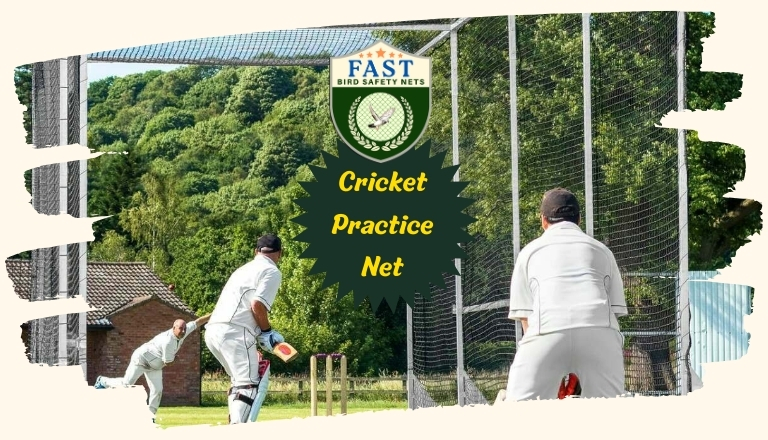Introduction:
Cricket, often dubbed as a game of skill and strategy, demands rigorous training and practice to excel. Whether you’re a seasoned professional or an aspiring cricketer, the importance of optimizing practice time cannot be overstated. In this guide, we delve into the realm of effective training with cricket practice nets, exploring techniques, strategies, and tips to make the most out of your practice sessions. From refining batting techniques to honing bowling skills, mastering fielding fundamentals to enhancing overall performance, let’s embark on a journey towards cricketing excellence through optimized practice routines using Cricket Practice Nets.
Understanding the Significance of Cricket Practice Nets:
Practice nets serve as invaluable tools for players at all levels. These enclosed spaces provide a controlled environment conducive to focused training sessions. Whether installed within cricket academies, club facilities, or even backyard setups, practice nets offer cricketers the opportunity to fine-tune their skills away from the pressures of live matches. With the ability to isolate specific aspects of the game, such as batting, bowling, and fielding, practice nets enable targeted training tailored to individual requirements.
Optimizing Batting Practice:
Batting lies at the heart of cricket, and mastering this skill requires dedicated practice. Within cricket practice nets, batsmen can refine their technique, timing, and shot selection under simulated match conditions. To optimize batting practice:
Focus on Footwork: Emphasize the importance of footwork in batting technique. Use the practice net to work on correct stance, stride, and movement across the crease.
Repetition with Variation: Practice a wide range of shots, including drives, cuts, pulls, and sweeps. Vary the angle, pace, and trajectory of deliveries to simulate different bowling scenarios.
Mental Conditioning: Develop mental resilience by visualizing match scenarios and practicing shot selection accordingly. Train to maintain focus and concentration amidst distractions.
Use Training Aids: Incorporate training aids such as batting tees, sidearm throwers, and reaction balls to enhance hand-eye coordination and reflexes.
Analyse and Adjust: Record batting sessions to review technique and identify areas for improvement. Seek feedback from coaches or peers to refine batting mechanics further.

Enhancing Bowling Skills:
Bowling prowess is a key determinant of a team’s success in cricket. Practice nets offer bowlers the opportunity to refine their action, accuracy, and variations. To optimize bowling practice:
Work on Action and Run-up: Pay attention to the bowling action and ensure a smooth, repeatable delivery stride. Use the practice net to fine-tune the run-up and maintain a consistent approach to the crease.
Focus on Accuracy: Practice hitting specific target areas consistently. Set up markers or cones within the net to simulate different lines and lengths, thereby improving accuracy and control.
Develop Variations: Experiment with different grips, wrist positions, and release points to master variations such as spin, swing, and pace. Use the cricket practice net to hone the execution of these skills in a controlled environment.
Bowl to a Plan: Simulate match scenarios by bowling with specific field settings in mind. Practice bowling in partnerships to develop tactics and strategies for different game situations.
Monitor Workload: Pay attention to workload management to prevent injury and fatigue. Gradually increase intensity and volume of bowling sessions while allowing adequate time for rest and recovery.
Perfecting Fielding Techniques:
Fielding is often the differentiating factor between winning and losing in cricket. Utilize practice nets to enhance catching, throwing, and agility skills. To optimize fielding practice:
Drill Fundamentals: Focus on basic fielding fundamentals such as body positioning, hand placement, and anticipation. Use drills like ground fielding, high catches, and diving stops to reinforce these skills.
Embrace Simulation: Create realistic fielding scenarios within the practice net, including ground balls, aerial catches, and relay throws. Mimic game-like situations to improve decision-making and reaction time.
Prioritize Agility and Mobility: Incorporate agility drills and footwork exercises to improve lateral movement and quickness across the field. Enhance agility through ladder drills, cone exercises, and shuttle runs.
Foster Communication: Encourage effective communication and teamwork among fielders. Practice calling for catches, signalling boundaries, and coordinating field placements to optimize fielding efficiency.
Focus on Fitness: Recognize the importance of fitness in fielding performance. Incorporate conditioning exercises, strength training, and flexibility drills to enhance endurance and prevent injuries.
Conclusion:
In the realm of cricket, practice is the cornerstone of success. By harnessing the potential of Practice nets and adopting a structured approach to training, players can elevate their game to new heights. Whether refining batting technique, mastering bowling variations, or perfecting fielding skills, optimizing practice time is essential for cricketing excellence. By incorporating the strategies outlined in this guide, cricketers can unlock their full potential and strive towards achieving their goals on the field. So, step into the practice net with purpose, dedication, and a relentless pursuit of improvement, for therein lies the path to cricketing greatness.






